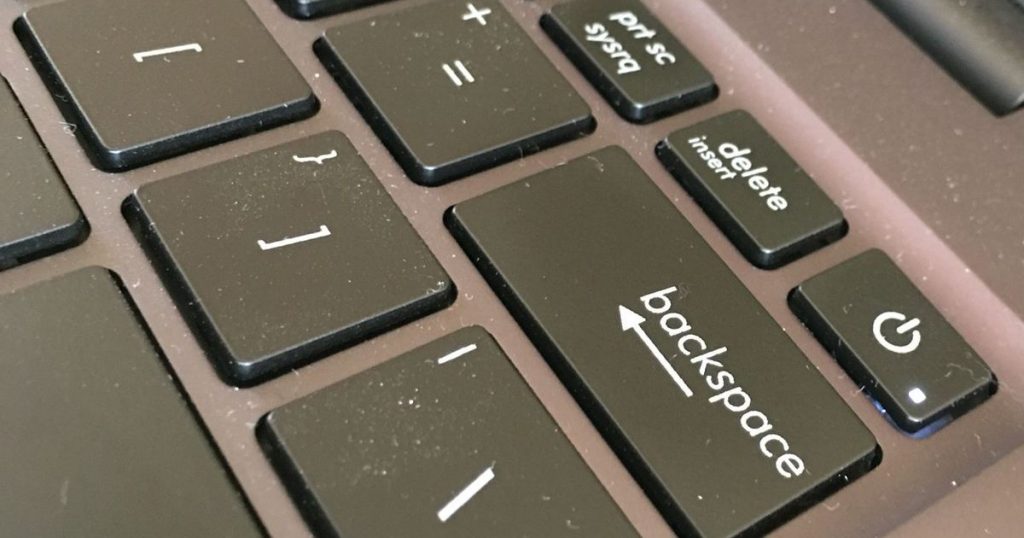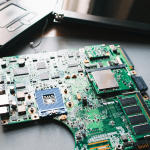Having problems with your laptop? Are you unable to substantiate power on your computer?
In this article, I’ll provide you with an in-depth analysis of possible reasons for no power on your laptop.
I’ll teach you how to solve this annoying issue and how to get your computer back up to speed. If you are a very busy person and finding it difficult to keep track of your tasks, this article is also for you.
Why does the laptop power light on, but nothing happens on the screen?
Contents
There might be a number of causes for this.
The most common one is a faulty connection between the laptop and the external devices.
Sometimes the cables that connect the laptop with external devices like your mouse, external monitor and speakers become loose or worn over time.
Another reason might be malfunctioning RAM or a faulty power adapter, both of which can lead to the problem where the laptop’s power light is turned on, but nothing is shown on the screen.
We must first determine the root problem by asking further questions.
Any issue with the external device, such as a broken connector cable, could cause the laptop not to turn on.
If the external device and the laptop are working properly, then the problem lies with the laptop’s hardware.
The most common hardware problem causing laptops to not turn on is a broken processor, which can typically be fixed by replacing the motherboard.
It might be caused when a charger or a USB cable is used to connect the laptop to an external device.
If the laptop has a defective power cable, it won’t charge properly and the laptop’s power light will stay on. Similarly, if the power cable is malfunctioning, the laptop might not turn on or charge properly.
It could also be a charging problem if the laptop is plugged into a power source and the charging indicator light doesn’t seem to be blinking.
When a laptop’s external devices aren’t correctly connected, it creates a balance issue.
The issue might be that the power adapter is not properly attached to the laptop, or that the cable or peripheral device wasn’t turned on.
Depending on the type of issue, your best course of action might involve buying a new power supply or cable or a new laptop.
How to fix laptop power light on but nothing happens
Check system board
Remove your laptop’s front cover.
Slide out a screw with an appropriately sized Phillips head screwdriver. The screw is located under a small Philips head screw.
Remove the screw and remove the front cover. Insert a thin object underneath the front cover and slide up the front cover.
Use your fingernail or a flathead screwdriver to lift and remove the front cover. Here’s where the system board is located.
In order for the repair to be complete, you must replace the system board. In order to replace the system board, you will need to know what hardware components are attached to it.
Then press and hold the power button.
Reconnect the adaptor to the laptop and plug it into the mains socket.
While your laptop is plugged in, press the power button multiple times. If your laptop turns on, this means the problem is with the motherboard.
Turn on your laptop by plugging in the charger and pressing and holding the power button. While holding down the power button, plug in the charger again.
There is a problem with the motherboard, but it might be an issue with the screen or the processor.
Trying to replace just the part responsible for power might be less effective, and it might also cost more.
To identify the problem, you must replace the whole logic board.
Test the monitor
Before proceeding to the more difficult troubleshooting steps below, give your laptop’s power button, keyboard, and mouse a quick check.
Each computer has a hotkey for turning the computer’s power on and off. It can be found on the keyboard, sometimes near the left Shift key or Caps Lock key.
The other key is usually a volume button. Some laptops have a key labeled Power that you need to use to turn it on.
Some laptops have a key labeled Power that is usually located beneath the keyboard. Pressing this key will initiate a power-down sequence that turns off your monitor and then shut it down.
In some cases, pressing this key will only turn your monitor off, but you will have to shut it down manually.
There’s a good chance the issue is not with your laptop’s power light.
To check your laptop’s display, connect an external monitor or TV to it.
If your laptop’s display still doesn’t work, then the problem is with your internal display. Your laptop’s display likely has some circuitry built inside it and this circuitry might need replacing.
If the issue is with your display, just replace it with a new one and your laptop will function normally.
Power Supply
In certain cases, a bad power supply is the reason for your laptop not working.
In worst cases, a repair professional may need to replace the entire power supply.
If nothing is working and your laptop has no power, it may be the power supply.
Check power supply voltage
If there is a problem with the input power supply, you may see multiple lights on the power supply display.
Alternatively, you may only see the power supply light. The first thing you should do is unplug the power supply, and then check it using a multimeter.
If the voltage on the power supply is between 5.0 and 5.5V, then the problem is minor, and you may be able to troubleshoot it on your own.
If the voltage on the power supply is between 5.5 and 6.0V, then there is a problem.
The voltage switch could be loose or may be broken. Check to see if the issue persists, then try to reconnect the motherboard or motherboard cables back to the battery.
In addition, if the battery was drained and needs to be replaced, you can attempt this by reconnecting the battery and motherboard cables, since the laptop should be able to turn on.
Furthermore, a faulty power supply voltage switch may cause your laptop to malfunction, so replacing it can often fix the problem.
Verify the input voltage is correct by unplugging the power supply and plugging it into another device, such as a phone charger, which should still turn on. If the voltage in the power supply is correct, the laptop should turn on.
However, if not, the power supply needs to be replaced.
Clear the CMOS
If the RAM is still not operating after cleaning and reinstalling the battery, you may have a damaged motherboard.
If you continue experiencing this issue, you can try replacing the motherboard, but make sure to research the model online first.
If this still does not fix the issue, there may be a problem with the RAM.
Go to a local computer store and try to replace the RAM with a different type. If that doesn’t fix the RAM issue, then the motherboard may have to be replaced.
Electrical shorts
Electrical shorts might sometimes be noticed or corrected inside the computer, but most often the problem lies behind the keyboard. To find the failure, you will need to disassemble the broken component.
It occurs when the power light is black, but everything else on the monitor works fine.
When shops use electrical conductors on their laptops, this sometimes causes electrical shorts to happen and the computer shuts off. When an electrical short occurs, the computer may need repair or replacement.
Electrical shorts in the motherboard or chipset connections are common reasons for this problem.
The best way to fix this problem is to unplug the laptop and remove the power supply. After unplugging the power supply, do not use any tools or move the laptop when it’s plugged in.
The monitor, too, can become damaged.
The screens of laptops can turn off for many reasons, even due to electrical shorts. You need to make sure to check out the techniques for repairing the screens shown in YouTube videos.
Reseat connection
Try reseating everything on your computer, including the power cord, memory modules, expansion cards and internet connection.
Try to reconnect everything and restart the computer to see if the problem resolves itself. However, if the problem persists, you may need to call a computer technician.
You should also check the connections to the motherboard as well as the monitor to ensure that everything is plugged in securely.
Depending on the type of laptop you have, you may need to remove a screw from the RAM and motherboard connections to remove them. To reinstall the connections, remove the screws and then reattach the screws back to their original positions.
If you run into any problems with this process, you will find detailed guides online to help you reconnect your cables.
Keyboard problem
Remove the keyboard from the laptop.
Look for a broken or cracked keyboard connector. It can wiggle out of place.
Pry the connector up with a pair of needle-nose pliers. Replace it with a new keyboard.
Then push the power button, and the backlight should turn on.
If you do not get power to the keyboard, it means the issue is within the system board. You’d need to replace that.
Conclusion
Laptop power light on but nothing happens-this is an issue that may occur if you forget to turn off your computer before leaving for an extended period of time.
If this occurs, the computer will not start up again when you plug it back in.
There is no charge left in your laptop’s battery if all you’ve managed to do is turn it on for a few minutes.
In this situation, connect the laptop to the AC power supply but leave it turned on. If you let the computer sit overnight, it should fully charge.
Then let the laptop breathe for about 30 minutes before resuming use.




